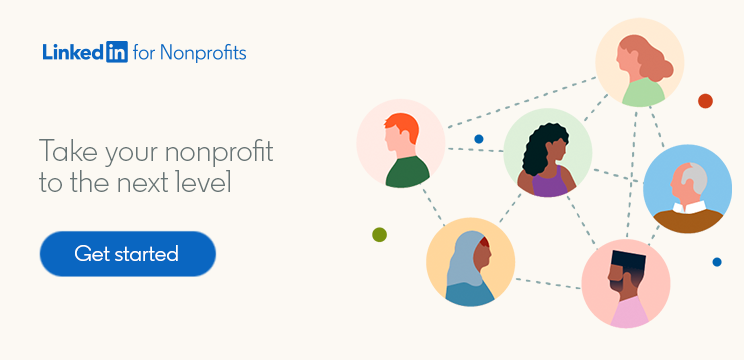
4 Digital Tips for Nonprofit Organizations
At any size or stage of development, every nonprofit organization benefits from more visibility. But it can be hard to know which channels to focus on, how to get the most engagement, and where to draw boundaries. Here are a few tactics to help you secure an effective digital strategy for your nonprofit, without reinventing the wheel.
1. Build your social media presence (or any digital strategy) around your people
People are the reason you and your organization do what you do, day after day: you want to better the world and improve life for the people in it. To prioritize your people while also maximizing your digital impact, consider encouraging your employees to set up their own personal brands on social media—and keep these active. This way, your staff engages with others to drive your messages—generating more visibility and forging more outreach than your organization can on its own. Best of all, the content and resulting connections become even more personalized and authentic.
This principle is important no matter what digital technologies you are using to fundraise or market your organization’s programs, especially as the next wave of digital automation and artificial intelligence tools have become more accessible for nonprofits. I can’t stress this enough and it’s why I co-authored with Allison Fine my next book, The Smart Nonprofit, due out in early 2022.
2. Craft transformative stories
Social media isn’t just about sharing content—it’s about telling stories that spark change and drive action. Stories have been with us from the beginning, and they’re ideal engagement tools for nonprofits because they enable you to explain why what you care about matters.
Beyond your own stories, consider getting your donors and other supporters to tell their stories, too. What do they care most about? Why does your nonprofit matter? Their experiences are valuable and enrich your digital presence with a diversity of perspective otherwise missing.
When telling stories about marginalized communities, I would caution nonprofits to make sure they’re compensating these communities and individuals for their time and their sharing. This way, your storytelling stays ethical, and you can stick to the principles that make your mission worthwhile.
3. Work with your current assets—and start small
If your team is lean or you don’t have a lot of resources to invest, it can seem daunting to create a digital strategy. But there are plenty of effective ways to achieve growth.
First, identify a specific outcome you want to work toward. Whether the goal is to generate more engagement, gain emails to add to a subscriber list, or increase followers and overall visibility, create a razor-focused, narrow strategy that provides you with realistic action steps.
After making some progress, you can expand your horizons and set new goals. This keeps your digital presence both manageable and consistently improving.
4. Make digital wellness a daily practice
In the wake of pandemic, the world today is even more attached to screens than before. Video fatigue is real, and social media can easily feel like an infinite well that you need to fill. Luckily, digital wellness is a mindset—and it’s one you can easily adopt as an organization.
Enforce strict work hours that require people to sign out at set intervals, or dedicate a specific time in the day for them to work on social media and digital strategies. Leaders should especially observe the importance of digital wellness in their own habits, encouraging the rest of your nonprofit to follow.
If you find yourself falling into unhealthy norms, such as a constant sense of urgency, a drive for the myth of perfectionism, or consistently long office hours, these are all symptoms of an organizational issue. The World Health Organization calls burnout a workplace occupational disease—one which comes with many detrimental effects to both employees and organizations. So, stay true to the boundaries that you set for yourself and other employees—it’ll only make you a stronger organization in the years to come. For more on workplace well-being and digital wellness, check out my book, The Happy, Healthy Nonprofit, or my blog.
Beth Kanter is an internationally recognized thought leader in digital transformation and well-being in the nonprofit workplace, a trainer and facilitator, and a sought-after keynote speaker. She is the co-author of The Networked Nonprofit and the award-winning Happy Healthy Nonprofit: Impact without Burnout. Named one of the most influential women in technology by Fast Company, she has over three decades of experience in designing and delivering training programs for nonprofits and foundations. Her next book, The Smart Nonprofit: Staying Human Centered in an Automated World, will be released by Wiley in March 2022.

